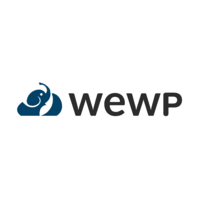What Is DNS Hijacking? Essential Detection and Prevention Techniques
 WeWP
WeWPDNS hijacking is a serious cybersecurity threat that compromises the integrity of your online activities by redirecting users to malicious sites or intercepting sensitive information. To safeguard your network and digital assets, it's crucial to understand what DNS hijacking is, how to detect it, and the best practices for preventing and fixing it. This guide provides a comprehensive overview of DNS hijacking, including essential techniques for detection, prevention, and resolution.
What is DNS Hijacking?
Definition and Explanation
DNS hijacking, also known as DNS redirection or DNS poisoning, involves an attacker manipulating DNS settings to redirect users from legitimate websites to fraudulent ones. The Domain Name System (DNS) is responsible for translating human-friendly domain names into IP addresses. When DNS queries are tampered with, users may be redirected to harmful sites or services. Understanding what DNS hijacking is is the first step in safeguarding against it.
How DNS Hijacking Attacks Are Carried Out
Attackers can hijack DNS through various methods:
Exploiting DNS Server Vulnerabilities: Unauthorized access to DNS servers to alter settings.
DNS Cache Poisoning: Inserting malicious DNS records into the cache of DNS resolvers.
Man-in-the-Middle Attacks: Intercepting DNS queries and responses to redirect users.
Common Goals and Motivations Behind DNS Hijacking Attacks
Phishing and Fraud: Redirecting users to fraudulent sites to steal personal and financial information.
Malware Distribution: Leading users to sites that download malicious software.
Traffic Interception: Monitoring or manipulating web traffic for illicit purposes.
How to Detect DNS Hijacking
Symptoms of DNS Hijacking
Recognizing the signs of DNS hijacking is crucial for timely intervention:
Unexpected Redirects: Being redirected to unfamiliar or suspicious websites could indicate a DNS hijacking attack.
Changes in Search Results: Altered or irrelevant search results may signal compromised DNS settings.
Unusual DNS Settings: Unauthorized changes to DNS configurations can be a red flag.
Techniques and Tools for Detection
DNS Query Monitoring: Regularly monitor DNS queries for unusual patterns or unauthorized requests. Tools like Wireshark can help in analyzing DNS traffic.
Checking and Validating DNS Records: Use DNS lookup tools to verify that DNS records are correct and haven’t been tampered with. This process is essential for effective DNS hijacking detection.
Using Specialized DNS Security Tools: Employ security tools designed for DNS monitoring and threat detection to identify potential hijacking attempts.
How to Prevent DNS Hijacking
Best Practices for Prevention
Securing DNS Configurations: Protect DNS settings with strong, unique passwords and restrict access to authorized users only. Regularly review and update your DNS settings to ensure they are secure.
Implementing DNSSEC (DNS Security Extensions): DNSSEC enhances security by allowing DNS responses to be digitally signed, ensuring their integrity and authenticity. This is a key measure in how to prevent DNS hijacking.
Regular Software and Firmware Updates: Keep your DNS servers and related software up to date with the latest security patches to protect against vulnerabilities.
Additional Preventive Measures
Using Strong Passwords and Multi-Factor Authentication: Enhance the security of DNS management accounts by using complex passwords and enabling multi-factor authentication (MFA). This is crucial for how to stop DNS hijacking effectively.
Continuous Monitoring of DNS Traffic and Records: Implement ongoing monitoring to detect and respond to any anomalies or unauthorized changes in DNS records and traffic.
How to Fix DNS Hijacking
Immediate Steps After an Attack
Identifying and Addressing the Source of the Hijacking: Determine how the hijacking occurred by reviewing logs and analyzing DNS settings. Address any vulnerabilities exploited by the attackers to resolve the DNS hijacking issue.
Restoring DNS Settings: Correct any altered DNS settings to restore normal operation. Ensure that all changes are validated and authorized. This is part of the DNS hijacking fix process.
Notifying Affected Parties and Authorities: Inform affected users and relevant authorities about the breach to mitigate damage and prevent further incidents.
Long-Term Solutions
Implementing Ongoing Monitoring: Establish continuous monitoring of DNS traffic and records to detect any future threats or anomalies promptly. This helps in maintaining long-term security against DNS hijacking attacks.
Enhancing Overall Security Practices: Review and improve your security practices based on lessons learned from the incident. Implement additional protective measures to prevent future attacks.
Conclusion
DNS hijacking poses a significant threat to online security, but understanding how to detect and prevent it can help protect your network and data. By implementing best practices for DNS security, actively monitoring for signs of hijacking, and knowing how to fix DNS hijacking issues, you can safeguard your digital assets and ensure a secure online environment. Take proactive steps today to address DNS hijacking and maintain robust security for your online activities.
Subscribe to my newsletter
Read articles from WeWP directly inside your inbox. Subscribe to the newsletter, and don't miss out.
Written by

WeWP
WeWP
Welcome to WeWP Powered By AddWeb Solution, your trusted partner in the world of Composer based WordPress hosting. With a strong foundation established over years of experience, WeWP offers a unique approach to customized hosting solutions for WordPress websites globally. What sets us apart? We not only provide top-notch website hosting but also offer expert website managed hosting services. At WeWP, your website isn’t just hosted; it's nurtured and cared for. We acknowledge the changing needs of our clients and provide the convenience of making website changes right here. No need to look elsewhere; we’ve got everything you need. Our commitment to assisting businesses and individuals in building their online presence is unwavering. With an impressive 99% uptime, your website remains accessible to your audience whenever they need it. Plus, our dedicated 24*7 support ensures you're never alone on your WordPress journey. Key Features: Cost-Effective Hosting Solutions 100% Carbon Neutral Hosting Composer Based Expertise Top-Notch Security Measures Dedicated Cloud Services Developed By WordPress Developers Round-the-Clock Support At WeWP, we don’t just offer hosting; we provide a reliable and supportive environment for your WordPress journey.